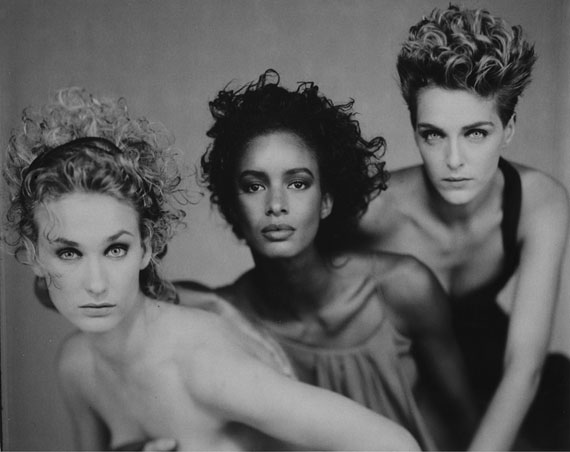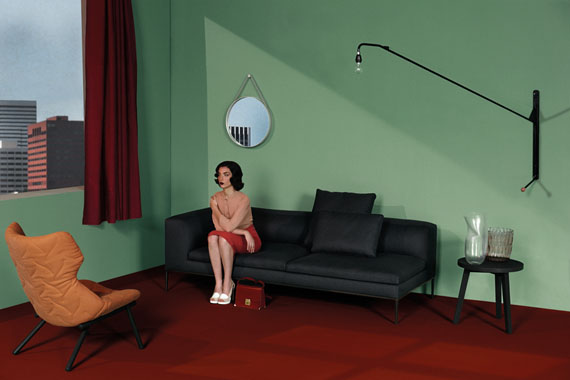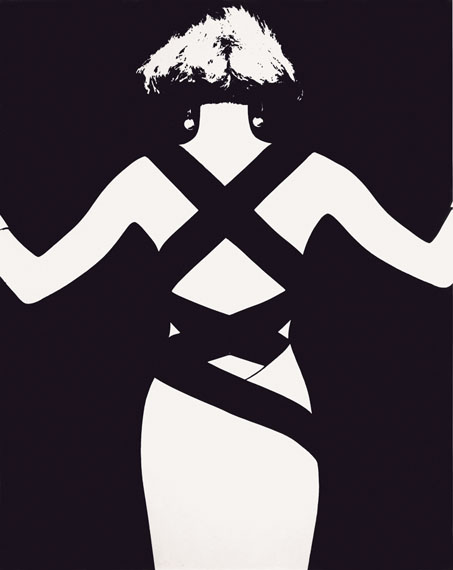
Giovanni Gastel »
Canons of Beauty
Exhibition: 16 Mar – 9 May 2017
Wed 15 Mar 19:00

The Lumiere Brothers Center for Photography
Bolshaya Polyanka street, 61, bld. 1
119180 Moscow
+7 495-228 98 78
Mon-Sat 11-20

Canons of Beauty by Giovanni Gastel
“What fascinates me about photography is that it has no relation to reality; it is the interruption of the constant flow of time. From eternal movement, life, to eternal immobility; it alludes to the real to create a real parallel”.
For more than forty years, Giovanni Gastel has created a world of fashion and photography all his own. His photographs have appeared on the covers and pages of top fashion magazines such as Harper's Bazaar, Vogue, Elle, Donna, Mondo Uomo Glamour, Femme, Amica, Sette, and have been featured in museums and private collections all over the world.
Gastel was born in Milan in 1955 and is descendant in a lineage of an ancient Italian family, the Viscontis. His uncle, the famous Italian film director, Luchino Visconti, first introduced the young artist to the world of art and cinema. Giovanni started to look for work as an actor, playing in performances and then looked to literature and poetry. He had intentions to dedicate his life to literature and did not give up his passion for such mediums even after he began pursuing photography full-time.

Gastel's first encounter with photography took place in the 1970s. At this time, photography was considered a legitimate art form and discipline and was beginning to be collected and shown in the world’s museums and galleries. Fashion photography, however, was still considered “practical” and had not garnered much recognition in the art world. Gastel entered a long period of apprenticeships wherein he photographed weddings, took portraits, small still-lives and occasionally, kids’ fashion photo sessions. In 1975, he accepted the offer to work for Christie’s Auction House. His time there taught him humility and respect toward objects.
The turning point of his photographic practice took place in 1981 when he met Carla Ghiglieri. She became his agent and introduced him to the world of fashion. Following the appearance of his first still-lives in the magazine, Annabella, in 1982, Giovanni started collaborating with magazines such as Vogue Italia, Mondo Uomo and Donna, and prestigious designers in both Italy and abroad. These included Nicola Trussardi, Giovanni Versace, and Krizia (Maria Mandelli). Gastel then joined the "Made in Italy" movement which consisted of designers, editors and photographers reacting to American traditions in an attempt to incorporate and showcase European aesthetics tied to art history.
Fashion photography gained artistic status very quickly during this time of modernity within the art world. Fashion photographic images were made in a myriad of contexts and, thus, began to define the photographic canon and grace various art spaces. Gastel's artistic consecration was had in 1997 when the Triennale di Milano held an exhibition of his works, curated by the contemporary art historian, Germano Celant.
Giovanni Gastel does not believe in the unification of the arts, but describes his photographic work metaphorically, in terms of theater and literature, emphasizing the importance of “creating a scene” and “telling history” with an image. He also paints the analogy of poetry to photography, which, he posits, consists not of the lyricism of an image but of the succinct and concise structure of form. For Gastel, poems and photographs are a bit like dreams. They carry many meanings and can develop by themselves, without an author, just as the image or subject of a photograph makes itself known on the paper's surface as it develops. The series, “Metamorphoses” refers to Franz Kafka’s text and therein, yields Gastel's explicit surrealistic understanding of photography. Viewers of his work can find visual references to artists who preceded him and were considered surrealists such as Man Ray, Irvin Penn, Erwin Blumenfeld, and Guy Burden.
Gastel uses various methods and techniques in his artistic practice, spanning many eras, from the Renaissance to Pop Art. He is aware of the illusiveness of fashion photography and continually reinvents the visual canon by offering viewers different perspectives of the idea of beauty and the ways it's represented. His methodology also makes reference to the cinematic experience. In the “Ritratti di Living” series, commissioned by Elle Decor in 2013, Gastel reproduced Edward Hopper’s works and played with that illusive nature, once again, making viewers of the work mistrust their own eyes.
Gastel works with large format analog cameras to contemporary digital devices. He uses various methods of analog photography such as pictorial rielaboration, decoupling and stratification, and when working with digital images, gives particular attention to post production. Unlike many others seasoned photographers, Gastel considers the invention of digital photographic technology to be the real birth of the medium, suggesting that everything until that point was, “mere archeology.” Gastel describes his attitude to the world and photography with the words of Pascal: ”We are all struggling to understand the meaning of life, tomorrow. But what we ought to be thinking about is a tapestry. We are inside that tapestry, lost in the meaningless tangle of its knots. But when we are on the other side, after death, moving away from it, we will be able to see the pattern. If even a single knot were to be missing, the tapestry would be incomplete.”�

